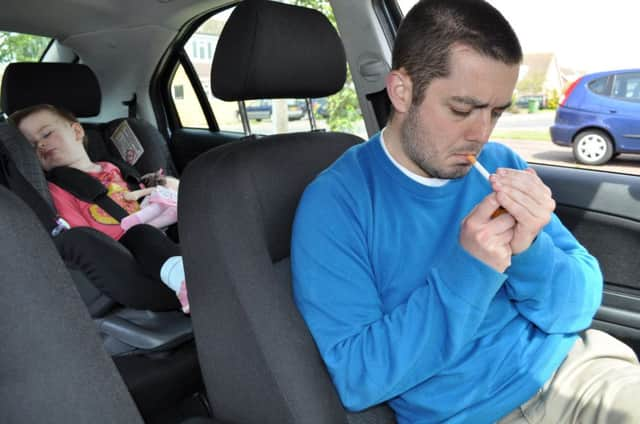Smoke-filled cars put children at risk


EARLIER this month, the UK parliament passed a law which will protect children from second-hand smoke in the confined space of the car – at least in England and Wales.
This is a change we in the British Lung Foundation are delighted to see. Across the UK, an estimated 430,000 children aged between 11 and 16 are exposed to smoke in a car every week. According to the Royal College of Physicians, this results in around 300,000 GP visits and nearly 10,000 hospital admissions, costing the NHS more than £23 million across the UK each year.
Advertisement
Hide AdAdvertisement
Hide AdIn addition, research from the University of Aberdeen has shown that just one cigarette in a car can create smoke levels more than 11 times higher than the old smoky pubs we all used to go to before the smoking ban.
Scotland has traditionally been viewed as being an international leader in public health measures of this kind – but is there now a danger that we’ll be left behind?
We all know that tobacco smoke is bad for you. But few people realise the level of risk posed to young lungs and the wide range of associated conditions. And it is a largely hidden danger. More than 80 per cent of second-hand smoke is made up of microscopic particles that are 20 times smaller than a single grain of sand. They pose an invisible but potentially deadly threat to children’s respiratory systems.
Why is this? It’s because children breathe faster and deeper than adults – and, as a result, their developing lungs are at greater risk than those of adults. Second-hand smoke is linked to illnesses ranging from glue ear to asthma, meningitis and sudden infant death syndrome (cot death).
Exposure to second-hand smoke in childhood is also linked to a higher risk of adult lung disease, including asthma, chronic obstructive pulmonary disease (incurable bronchitis and emphysema) and lung cancer. So protecting young people from exposure to the dangers of second-hand smoke is a vital part of ensuring that Scotland’s future generations enjoy better lung health than we do.
Over the past decade, adults have been protected from the effects of second-hand smoke in every aspect of public life – whether we are at work, on public transport, or in cinemas, pubs or restaurants. And yet all the while a significant number of children are exposed to potentially life-threatening levels of exposure as part of their “daily commute” to school, while going on holiday or on the way to sports and clubs. It doesn’t make sense.
Paediatricians have been saying this for years. This is also the message we get from children and young people themselves. Most encouraging of all, it is a change that most smokers now readily accept.
In the future, keeping our cars smoke-free when children and young people are present will be viewed as simply another element in ensuring their safety. It is common sense, so it will be adhered to by the vast majority of parents and carers. And its vital importance in ensuring the safety of young people will explain why it has been given legal status to ensure its enforcement.
Advertisement
Hide AdAdvertisement
Hide AdWhile the recent vote applied only to England and Wales, Scotland still has the opportunity to retake pole position in this vital area of child health protection. Jim Hume MSP has been developing a member’s bill in the Scottish Parliament which will offer young people this protection by the end of this year.
More than 30 MSPs from all parties have already signed up in support but we need to make sure we secure a majority to get this into law. The sheer scale of the majority in Westminster (over three to one in favour) clearly demonstrated that the pleas from the medical community and the overwhelming evidence base have finally won the argument in support of this measure.
We need to make sure that children and young people across Scotland are given the same level of protection as their counterparts in England and Wales, Australia, Canada, the United States, South Africa… the list is growing. Let’s make sure that Scotland takes its rightful place on it.
• Dr James Cant is head of British Lung Foundation Scotland www.blf.org.uk/scotland
SEE ALSO